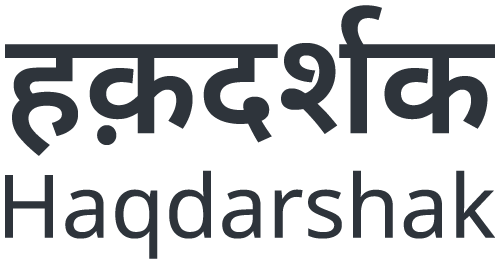Documented Realities:
The Importance of Identity Documents

By Priyanka Vaze
01 / Overview
In a country, one might think of individuals as falling into two categories — they are either recognized citizens of a particular country, or they are stateless. However, the complexity of reality surpasses this binary classification.
There are a substantial number of people who, in theory, hold national status in a specific country, but lack the essential identity documents needed to substantiate their legal status, such as a Birth Certificate or Caste Certificate.
These individuals find themselves caught in a grey area which significantly hinders their ability to access the same services and rights as their documented counterparts do.
02 / India as a Welfare State
With an extensive network of social welfare programs to address the socio-economic needs of its population, India is a shining example of a welfare state.
These programs encompass poverty alleviation schemes, access to quality education and healthcare, subsidies for essential goods and public services, and are aimed at enhancing the overall quality of life and forging a more equitable society for all.
The expenditure budget for FY 2023-24 allocates approximately 9% of the budget to food, fertiliser, and fuel. This is specifically focused on allowing marginalised populations to access subsidised food through Ration Cards, quality fertilisers at an affordable rate to farmers with Land Holding Documents, and clean fuel for cooking.
A closer look at the schemes with the largest expenditure allocation helps explain the critical role identity documents play in unlocking the schemes, and therefore, accessing the largest pool of welfare state funding.
The table below includes a list of popular schemes, in terms of budget allocation, and an indicative list of documents required to apply for that scheme.
[table id=5 /]
If we take the total expenditure budget as approximately INR 45 lakh crore, INR 3 lakh crore is allocated to food subsidies (approximately 6% of the budget) and INR 10 lakh crore is allocated to the remaining schemes and subsidies (making up an additional 20% of the budget). This means that to access 26% of the budgetary provision for these welfare schemes, the above mentioned few identity documents are essential.
Understanding the role of social protection schemes as they interact with a person’s life cycle is a fascinating way of documenting how these interventions are designed to promote equity in access.
03 / The Right to Education
Enacted in 2009, the Right to Education Act (RTE) has been instrumental in making education accessible to every child aged 6 to 14.
The Act removes financial barriers to quality education by ensuring universal access, prohibiting discrimination, and mandating compulsory and free education in government schools. It also reserves seats in private schools for disadvantaged groups, promotes community participation, and eliminates board exams until Class 8, creating a more inclusive and child-friendly education system.
The Act has significantly increased school enrollments, particularly among marginalised communities, contributing to the movement towards universal education in India.
To access some of the entitlements outlined in the Act, however, citizens must prove their eligibility by providing relevant documents. For example, documents like Caste, Income, and Domicile Certificates are essential for some to unlock an education subsidy provision of INR 5400 per annum, per child.
Similarly, if students are eligible for certain types of admissions through their Caste or Income Category, there are various pre-matric scholarship schemes offered by State Governments they may be eligible for, which amount to up to INR 18,500 per annum. Moreover, depending on the course of choice, certain groups may be eligible for waived admission fees to central universities, or receive subsidies ranging from INR 260 to INR 1,00,000 per semester. These are all dependent on one’s ability to prove their eligibility by holding the correct documents.
We met Kalpana (16), a student from the tribal village of Palghar, Maharashtra. She was eager to pursue her higher education at an institute 50 km away from her hamlet. When our team interacted with her, she learned that as she belonged to a primitive tribe category, she was also eligible for an INR 15,000 per annum provision from the State Government to stay at a hostel facility, with a Caste Certificate. The Caste Certificate is widely known to facilitate education admissions, but can also enable access to other schemes, including hostels, food, and travel.
04 / A Career Anchored in Certainty
4.1
Government Job Opportunities
To attempt to correct historical legacies of exclusion, there are reserved places for members of Scheduled Castes, Scheduled Tribes, Other Backward Communities, and Economically Weaker Sections in specific government roles. To be eligible, however, one needs a Caste Certificate that confirms one’s membership in these groups.
Reservations for members from SCs, STs, OBCs, and EWS backgrounds, in case of direct recruitment, is available in all groups of Government posts. When direct recruitment is made on all India basis by open competition, reservation for SCs, STs and OBCs is 15%, 7.5% and 27% respectively, and when direct recruitment is made on all India basis otherwise than by open competition, it is 16.66%, 7.5% and 25.84%, respectively. For recruitment to specific groups of posts, such as Group C and Group D posts, the percentage of reservation for SC and ST members is generally set in proportion to the population of SC and ST in the State or Union Territory.
4.2
Self-Employment Opportunities
To encourage self-employment, the Government has implemented schemes like the Laghu Vyavasayik Yojana, where beneficiaries can access loans of up to INR 11,30,000.
The schemes extend to the unorganised sector, where there are various cohort-specific welfare boards, such as the Building and Construction Workers’ Welfare Board. The Building and Other Construction Workers’ Welfare Cess (BOCWW Cess) is a cess levied on an employer’s construction cost. The cess is used to fund welfare schemes for construction workers, including life insurance, disability cover, health provisions, maternity support, education scholarships, housing allowance, and more.
Uttar Pradesh has the highest number of registered workers, with 15,266,278 registered workers, and Maharashtra has the highest cess collection, with a fund of INR 14,273.18 crore1. Karnataka (65%) and Odisha (85%) are performing fairly when we look at the ratio of total cess collected and total expenditure on the welfare of workers, while Kerala’s -60.52% negative balance indicates that there is a pressing need of funds to facilitate worker welfare. Regional variations and financial efficiency challenges suggest the need for targeted interventions. Overall, the national cumulative balance is 43.68%, indicating a positive financial position for BOCW welfare programs in the country. The median expenditure per registered worker by the welfare boards, across states, comes to approximately INR 7200.
Rakesh Kishore, a labourer in Lalitpur, Uttar Pradesh, has held a Building and Other Construction Workers (BOCW) Card since 2021. In August 2023, the eldest of his three daughters was getting married. Thinking about the financial requirements of a wedding, Rakesh reached out to Veerbhan, a Haqdarshak, to explore what schemes he was eligible for through his BOCW Card (in case any could provide some financial assistance). After a thorough screening process, it was determined that Rakesh was eligible for a marriage assistance scheme for his daughter. Veerbhan helped him apply for the scheme in August 2023, and by December 2023, he received the complete scheme allowance of INR 55,000.
There are a range of other schemes self-employed citizens can avail of to enhance their opportunities, if they hold certain documents.
For example, the Soil Health Card helps improve farming decisions around seed selection and fertiliser selection, which can ultimately result in an increased income, and savings, for a farmer. A study2 conducted by the National Productivity Council (NPC) states that Soil Health Card recommendations can result in a 5-6% increase in the overall yield of the produce.
In the Nandyala District of Andhra Pradesh, rainfall is low and the region is classified as semi-arid. According to a study published in the Journal of Soils and Crops3, the soil in the region is alkaline, so requires a thorough soil assessment to understand how to maximise a yield. Through our work, we have come across a number of paddy cultivators in this region who have complained about a low yield. After we helped them get a Soil Health Card, they were able to identify the correct fertilisers and crop selection they needed, and prepare for a better yield in the subsequent years.
05 / A Social Security Safety Net
The ‘Unique ID for Persons with Disabilities’ project is underway to establish a National Database for individuals with disabilities (PwDs) and issue a Unique Disability Identity Card to each eligible person.
Beyond promoting transparency, efficiency, and the streamlined delivery of government benefits to PwDs, the initiative aims to ensure uniformity in the process. The project also facilitates tracking the physical and financial progress of beneficiaries at various implementation levels, ranging from the village and block levels to district, state, and national levels. The UDID Card, therefore, plays an important role in unlocking the provisions made by the government under various social security programs4 for PwDs
[table id=7 /]
06 / Conclusion
Possession of appropriate and updated documents at every stage comes in handy in picking up what is meant for you at the right time.
At Haqdarshak, our aim is to facilitate citizens in obtaining essential documents through fair procedures. While the immediate impact of possessing these documents may be challenging to quantify, the enduring influence they wield over a beneficiary’s lifetime is crucial for fostering sustainable societies and enabling self-reliance, contributing to a more meaningful life.
1https://pib.gov.in/PressReleseDetailm.aspx?PRID=1809240
2https://pib.gov.in/PressReleaseIframePage.aspx?PRID=1776580#:~:text=In%20the%20study%20it%20was,by%20adopting%20the%20SHC%20recommendations.
3https://journalofsoilsandcrops.com/Download/JUN2022/5.pdf
4https://www.indiabudget.gov.in/doc/eb/sbe94.pdf



